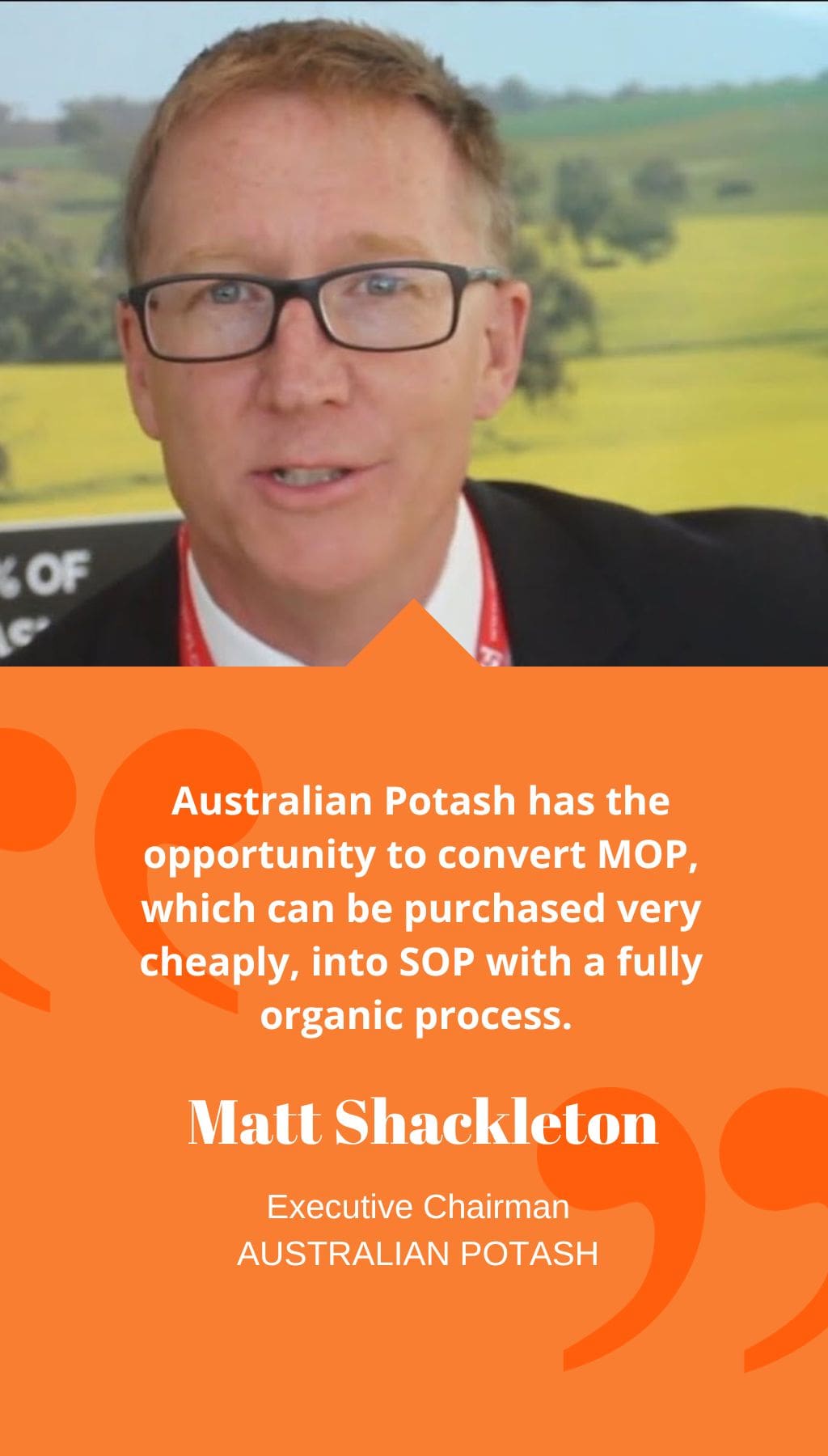
- Australia | 10 April 2017

Can you explain the reasoning behind changing the company name from Goldphyre to Australian Potash, and what is the company’s strategy for the medium term?
The company was initially established in December 2011 as a gold and base metals exploration company, but after over two years of sporadic gold exploration and limited success, there was a need to change the strategy and direction. In 2014, the I joined the company with the specific aim of turning around the strategy, and they started to explore the Lake Wells Potash project, which involved exploring extensively, sampling, drilling, surveying with geophysical techniques, and identifying a paleo channel that runs through the project. The exploration led to the release of the Lake Wells scoping study. The goal was to change the name to reflect what the company wanted to do moving forward, which is why they changed the name to Australian Potash. The company’s strategy for the medium term is to become the industry leader in Australia and lock down funding by this time next year.
What are the next steps for Australian Potash to move forward with the Lake Wells project after releasing the scoping study and starting the feasibility study in Q2 of 2017?
The Lake Wells scoping study exceeded expectations, with an outlook to produce 150 thousand tonnes per annum, with the capacity to increase the number to 300 thousand tonnes per annum. The plan is to start stage 2 in 5 years, which would double production. Stage 2 is forecast to pay for itself out of internally generated cash flows, and the development will be staged to mitigate operational risk. The company’s financial model is very strong, and they have started talking to debt funding consultants. They are not sure what the funding structure will be, but it would not be unusual to see a 50%-50% or a 60%-40% debt equity split. The payback period for the first stage is about 2.9 years, which is a fast payback with a long mine life of 20 years with both stages or +35 years if only stage 1 is developed. They believe that with the detail of the scoping study, they can complete the feasibility program quickly.
What are the greatest challenges that the Lake Wells project is facing at the moment?
The biggest challenge at the moment is time. While Australian Potash has a solid team of people, Australia does not have a deep pool of skills or experience when it comes to potash production. This lack of experience in the country means that the company is looking for process engineers who have knowledge of the resource, and they believe they can also use some of the local engineers who will get themselves up to speed on it. Another challenge is that Australian investors are not familiar with potash yet, which impacts ASX confidence. However, the company believes that as soon as someone produces it, that will start to change.
Can you explain how Australian Potash intends to convert Muriate of Potash (MOP) into Sulphate of Potash (SOP), when they have an SOP resource, and why they would do this?
Australian Potash has the opportunity to convert MOP, which can be purchased very cheaply, into SOP with a fully organic process. While Germany has developed and commercialized the Mannheim Process, which produces SOP from MOP through the application of sulfuric acid to MOP and having hydrochloric acid as the waste, Australian Potash can mix MOP with water and the sulfate from their brine in the crystallization circuit to produce SOP. The Mannheim Process is much more expensive and ends up with hydrochloric acid, which is challenging to dispose of.














